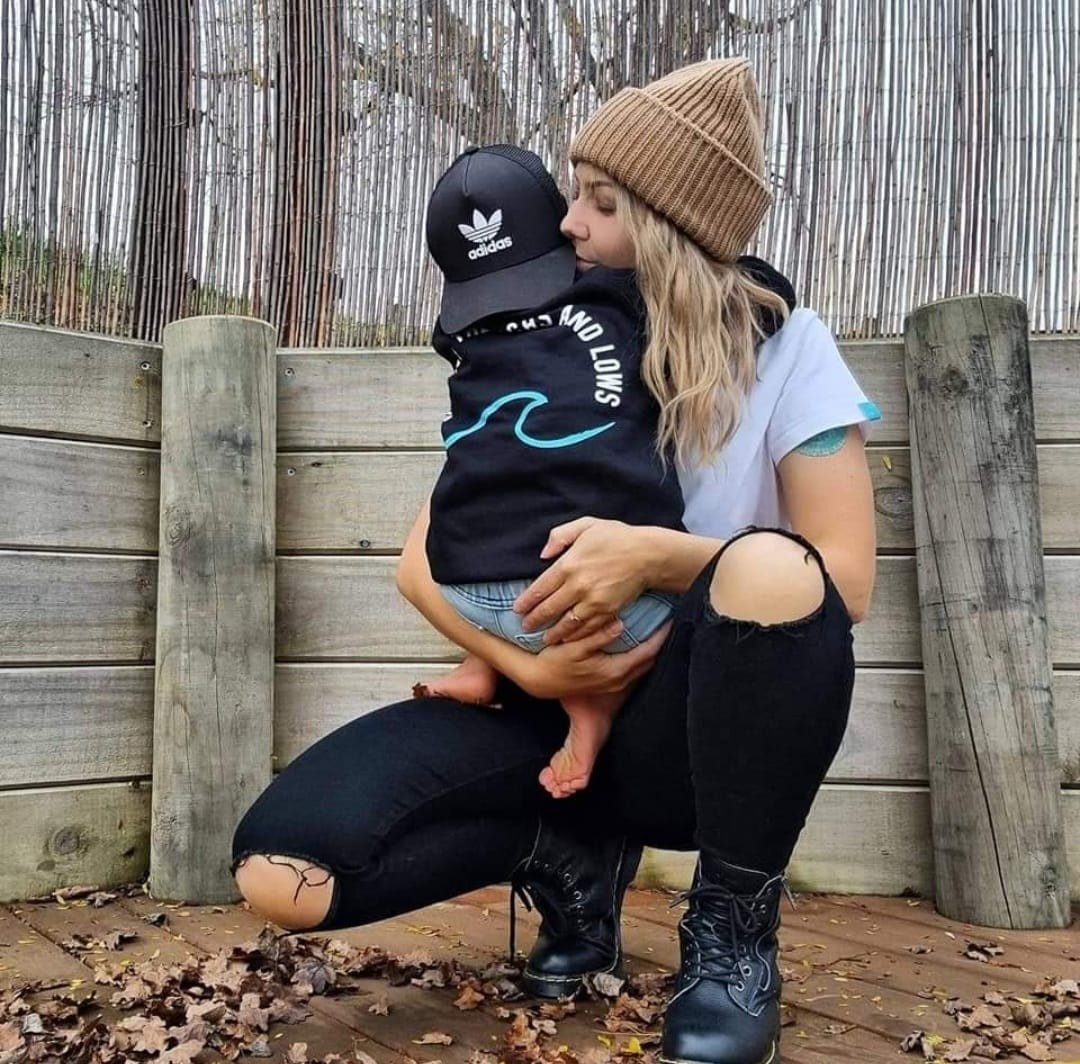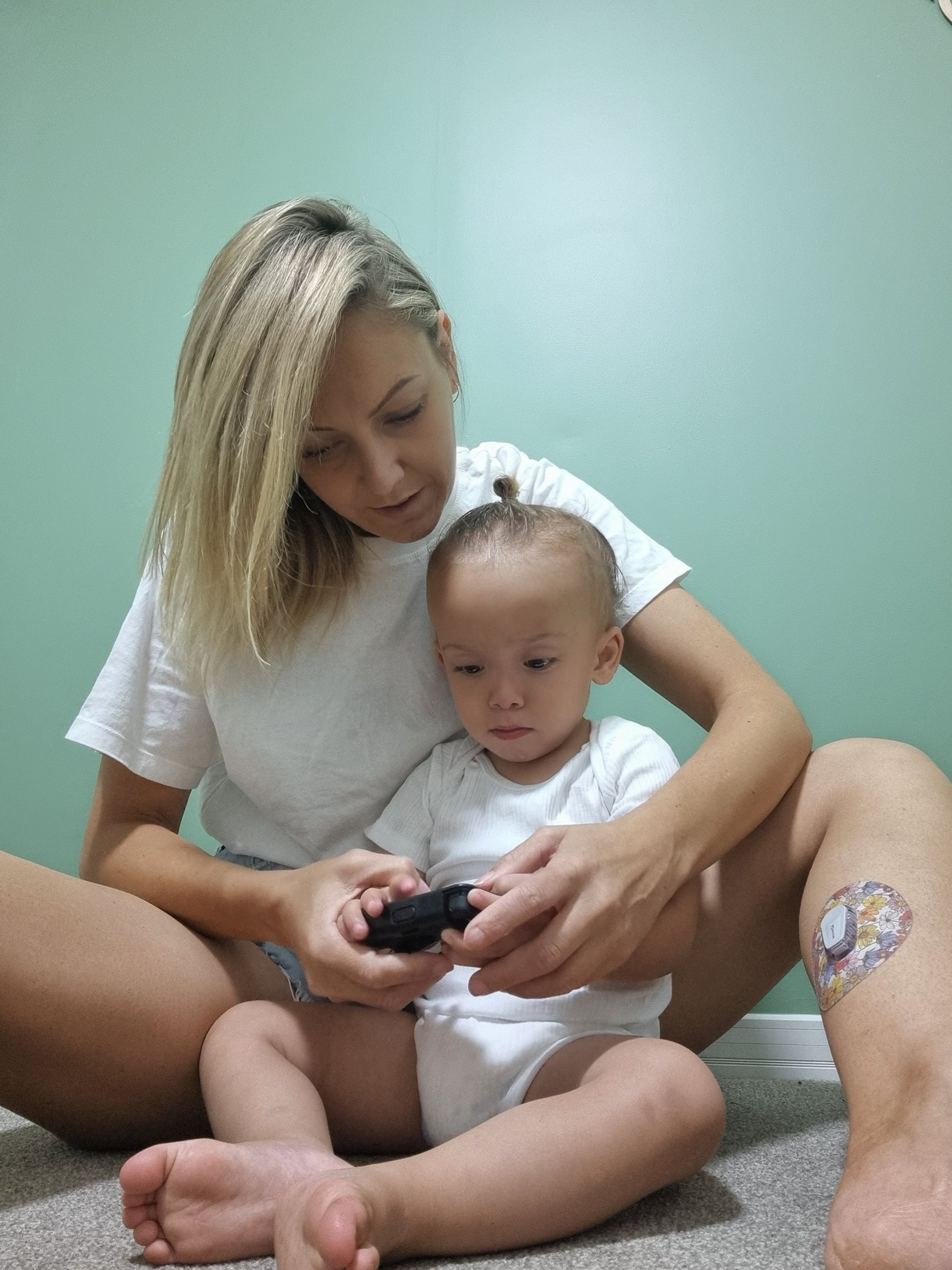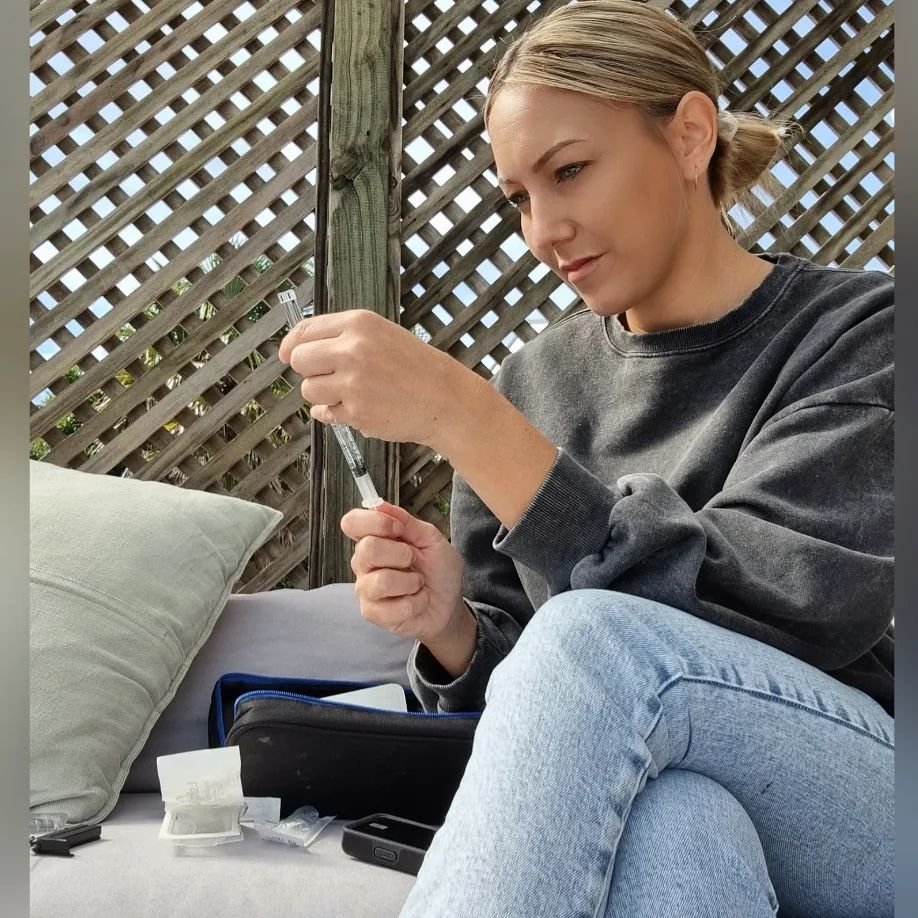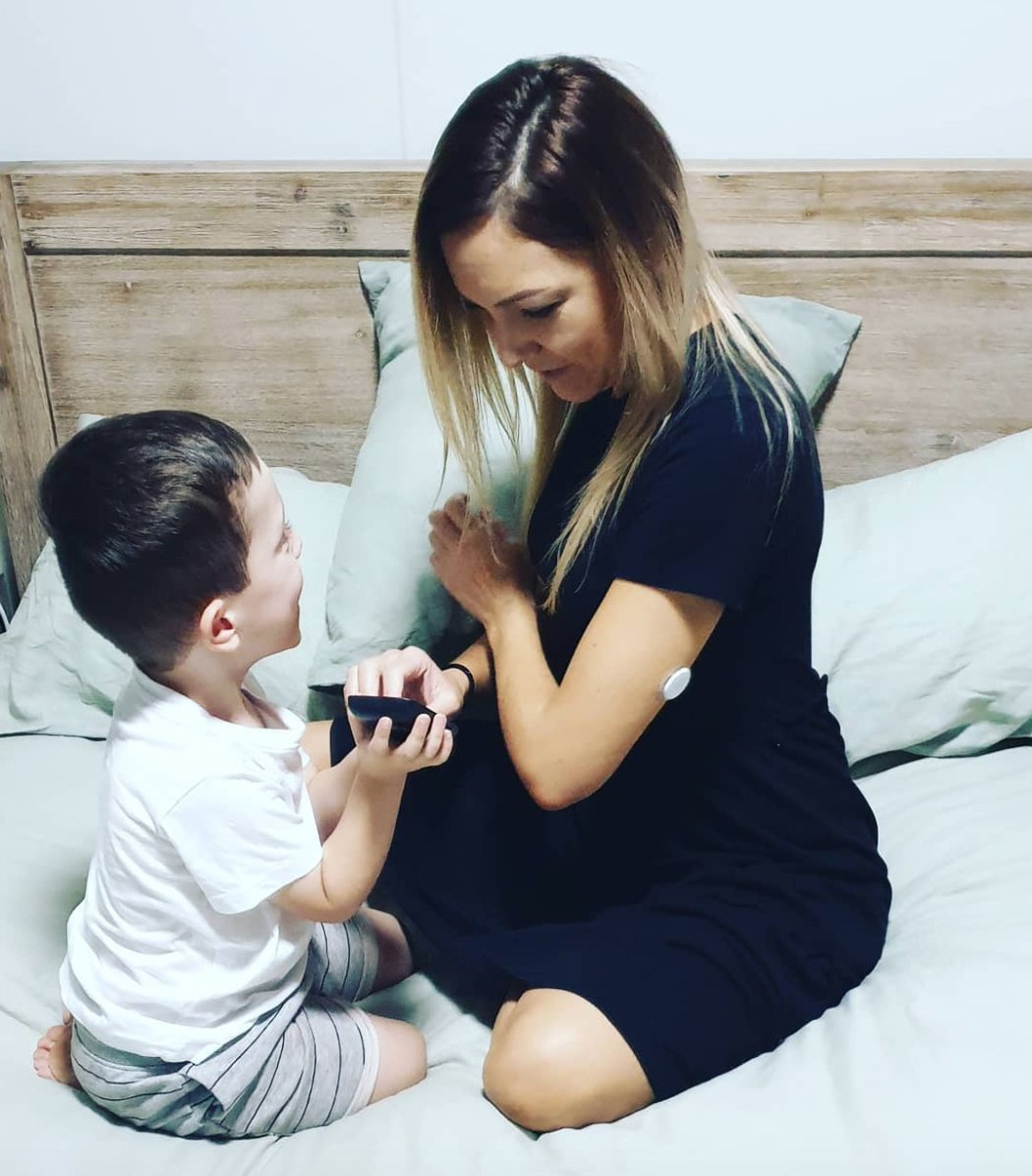Ana: Opening up to help and heal
In writing about her twin journeys – with type 1 diabetes and kidney disease – Ana Hutchins inspires and encourages others, and releases some of the burden for herself.
Ana looks back to when she first decided to start sharing her story: ‘It all started when I was on maternity leave with my first child. I wasn’t used to the slower days – I needed a project. I have a love for words, and people were always captivated by my diagnosis story, so I thought, why not use this time to write a book about it?
‘That process was overwhelming, so I turned it into a blog. Writing shorter snippets of my story was more enjoyable.
‘That led me to Instagram, where I stumbled across the type 1 diabetes community. I knew right away that I’d found the perfect platform to share my story. Everyone in that community is so inviting. I love the interaction, and we all learn so much from each other. It’s such a positive space, where I’ve gained confidence in myself as a diabetic, a woman, and a mother, as well as the confidence to be able to openly and honestly share more and more of my life while navigating type 1. I’ve also made lifelong friends along the way – the biggest reward of it all.’
Ana believes it’s vital for there to be people publicly sharing their diabetes stories: ‘It’s important to acknowledge the heaviness, so no-one ever has to feel like they’re alone. I like to be the voice that others can resonate with. Type 1 diabetes is an invisible illness. We look absolutely fine on the outside, but inside is another story completely.
‘I hope to resonate with youth and teens the most. It’s such a tough gig navigating those tender years, going through puberty, trying to discover yourself and fit in with your peers, and, at the same time, trying to juggle everything type 1 throws at us.
‘I also always acknowledge the parents and caregivers of children who have type 1. When your child goes through anything in life, a parent feels it twice as much. Parents carry that burden for us so we don’t have to, and, at times, it can feel like a thankless job. I just want everyone dealing with type 1, whether it’s themselves or a loved one, to feel seen and heard. I hope that my posts can lessen some of the heaviness, even if it’s just in that moment.’
Ana says the greatest highlights of her writing journey are often the messages she receives from parents, thanking her for sharing her story and showing their type 1 children that normal lives are possible.
‘It’s a humbling feeling knowing I’m providing value to so many. I believe this is my purpose in life. To share what I’m going through to help others.’
Memories of diagnosis
Ana was 11 when she was diagnosed with type 1: ‘Looking back, I had the classic symptoms: weight loss and excessive thirst. I fell ill and was misdiagnosed with tonsillitis. I deteriorated rapidly and started falling in and out of consciousness. After that, I was taken straight into ED.
‘From then, I can only recall snippets. I remember hearing the word “diabetes”, and I knew what that was, thanks to Stacy from The Babysitters Club books. I was continuing to fall in and out of consciousness, and when I woke again I was in our hospital’s ICU surrounded by all of my family.
‘I was so sick that my veins had all sunk. I was begging for a drink, so the doctors bribed me with a piece of ice if they could try new places on my body to get a line in.’
‘When I woke again, I was in the ICU at Starship Children’s hospital. I’d been put on a child flight and flown there for urgent specialised care. I spent seven days in hospital learning everything there was to know about how to manage my new diagnosis.
‘There was no fancy technology back then, which meant no real flexibility in the management. I was told to always eat 60g of carbs for breakfast, lunch, and dinner, and 15g carbs for snacks in between so that I could have the same amount of insulin each time. Mind blowing when I think back now.
‘My mum would have to prick my finger every few hours overnight, and she’d pray that I was in range so she wouldn’t have to wake me with jellybeans and toast. Apparently, I wasn’t the nicest person to wake up overnight. (Sorry, Mum!).
‘One day before I left hospital, they purposely let my blood sugar go low so I’d know the feeling and how to treat it. I was nervous and wasn’t sure what to expect and then it happened, and the feeling was so familiar to me… I’d been low countless times before but never told anyone because I was unaware what it was. I’d just have this overwhelming feeling of needing to eat everything in sight and thought I must have just been super hungry. I told the doctor right away, and they said I would have had diabetes long before I was diagnosed, which came as a shock.’
Pregnancy and kidney disease
In her early 20s, Ana travelled for six years.
‘Those were the days where I hated my diabetes the most. I was experiencing the wonders of the world, living my best life, all the while putting my diabetes on the back burner and causing major damage to my body.’
When she returned to New Zealand, she found herself dealing with two major life changes at once. ‘I fell pregnant, and that’s when I was told of my kidney disease.
‘I had an extremely tough pregnancy, as my body was not in the best condition and I was in denial about my kidney disease.’
Ana was told her baby might not make it. ‘It was really awful, but I trusted my body and felt, in my soul, it was meant to be. I delivered at 33 weeks, and, although early, he was absolutely perfect. I believe he was sent to me to change my life around for the better.
‘From that moment on is when I really started taking care of myself, my diabetes management and taking a proactive approach to my new-found kidney diagnosis. I not only had myself to live for now, but a little boy who needed a mum. A healthy mum.
‘Unfortunately, during my pregnancy with baby number two, my kidneys lost further function. I delivered early again – at 32 weeks – to another beautiful baby boy.
‘During the months right after delivery, I was monitored extremely closely. My kidneys never gained back any more function like I’d hoped they would once they were relieved from the stress of pregnancy.’
Ana now feels she is caught in a kind of limbo with her kidney disease, waiting to see what happens next.
She says, ‘There’s nothing that can be done until we can determine a pattern … which way my kidneys will go and at what rate. It’s the waiting that I struggle with the most.’
She says her biggest fear is dialysis. ‘I’d prefer to skip that part altogether and go straight to a transplant with a live donor, but, unfortunately, things don’t work like that.’
If and when that happens, ‘I’ll also have an option to get a double pancreas/kidney transplant, which would mean no more type 1 diabetes! Sounds like a dream, right? In all honesty, I’m unsure how I feel about it.
‘Diabetes is all I know, and the thought of a double transplant frightens me. I would need some serious therapy to get my head around not being diabetic anymore. I get anxiety already just thinking about going to sleep without knowing what my blood sugars are doing.
‘For now, I’m trying to take each day as it comes and enjoy every moment before the heavy stuff starts.’
Dealing with everything at once
As a hands-on parent who has both kidney disease and type 1 diabetes, Ana has a lot to deal with. Support has been crucial. ‘I was given advice from my boss when I had my first baby – “Go where the need is most”. My work is unbelievably understanding when it comes to my health and my family needs, which I will forever be grateful for.’
As well as external support, she has built her inner resources. ‘I’ve had to learn different ways to cope that work for me during those hard times. I believe opening up more with how I’m feeling, and being vulnerable with everyone around me, certainly helps lessen the mental heaviness of it all.’
‘I went through a really rough patch mentally last year trying to cope with the burden of it all and show up for everyone else when I could barely show up for myself. Plus the country was in lockdown, which definitely didn’t do my mental health any favours.
‘It all got too much, and I found myself pushing everyone around me away. I thought I had to go through that hard patch on my own because I felt misunderstood. But the truth was, I wasn’t actually talking in the first place to give anyone the chance to understand me. It felt like I was in this vicious cycle with myself. I’d never experienced anything like that before, so I was struggling to identify it.
‘I’ve found that writing everything down helps with the mental load of it all. Getting it all down on paper and out of my head makes a big difference.
‘I always feel a little lighter once I write. The bonus is that hopefully others in my situation find it and they feel less alone too. Our minds can take us to some pretty dark places at times, and it can be lonely.
‘I now make sure I take time for myself. I’m in love with mornings, and I always wake well before my family just to be able to sit in the calm with just myself and a coffee.
‘I also like to work out and run. In fact, I solve many of my problems while running! I’m consciously teaching myself to live in the moment and soak up all the magic that this life has to offer me.’
What next?
Above all, Ana wants to encourage young people to take control of their diabetes: ‘I would love to create a safe space where I could mentor our youth to help guide them and build self-confidence around dealing with type 1 mentally. This is in the hopes that they never have the “it would never happen to me” mentality, and that they’re proactive in their management to avoid the long-term complications.
‘I used to hide my diabetes. I was embarrassed. I didn’t want to be different. If I’d had a “me” to look up to when I was that age, I believe I’d be telling a completely different story today.’
Ana shares her stories here: www.facebook.com/typeonekiwi
This story was first shared in the Winter 2021 issue of Diabetes Wellness. Got a story of your own to share? Get in touch editor@diabetes.org.nz
Subscribe to Diabetes Wellness in print or digital.





